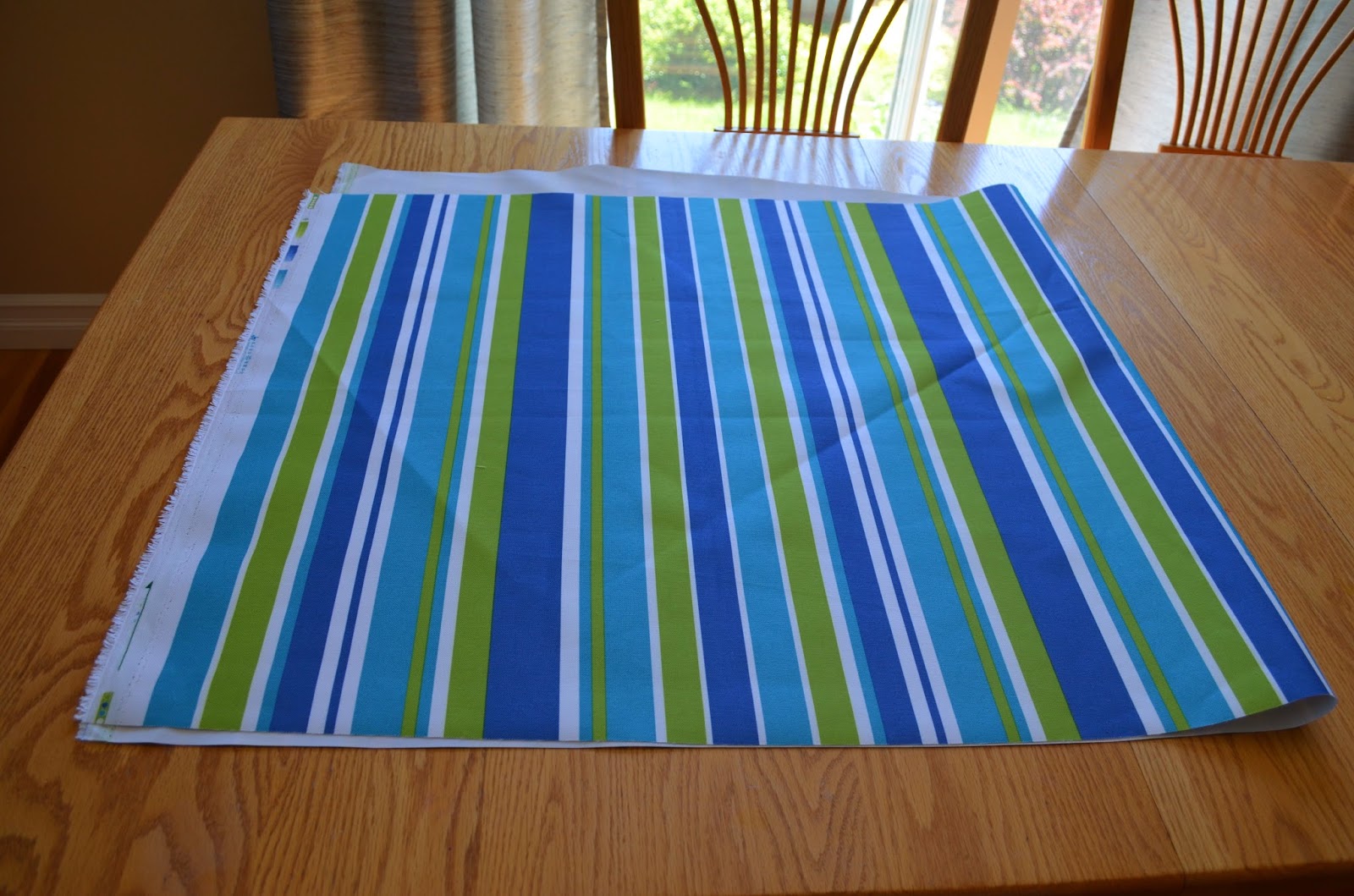After a long hard winter, my cotton clothespin bag which I neglected to bring in all these months is spent. The cotton is deteriorated due to the elements (sun, rain, hail, frost, fog, snow and sleet) and it is time for a new one. A simple clothespin bag is the focus of my basic sewing project. It is easy to sew, fun to make, and will hang on my clothesline until I decide to make another. This project reminds me of my mother who hung her clothes on the line during the short Newfoundland summers. We used to joke that if Mom wasn't in the house you could find her in one of two places: the Church or the clothesline! The path leading to the clothesline was well traveled when you raise 9 children.
Here she goes:
Step 1: I started with a basic paper pattern that I laminated. Supplies: Apron: 8.5 x 24 inches, Band: 3 x 13, Bias tape: 36 inches, Sleeve trim 4 x 21.
Step 2: I selected a bright blue, green, and white striped outdoor lawn furniture fabric. ($6.00 from Atlantic Fabrics).
Step 3: Pinned and cut the pattern. Aligned the stripes to take advantage of the colors I liked.
Step 4: I pinned the back to the front and stitched at the shoulder seams.
Step 5: I added bias tape around the neckline to form the opening of the clothespin bag.
Step 7: Cut, stitch, and gather apron to attach as an embellishment.
Step 8: Stitch front to back, pin apron in place
Step 9: Clip corners and trim wider seams.
Step 10: Seam finish all seams with a zigzag stitch.
Step 11: I embellished the front of the bag with a decorative green apple button.
Step 12: Turn right side out.
Step 13: Admire the new clothespin bag! Have a close look at the old and the new. It hangs beautifully on my clothesline at the back of my house.
Two sources that I suggest might be useful for teaching basic sewing instructions are:
1 .Singer Simple Sewing: The Complete Illustrated Machine-side Reference of Tips and Techniques
2. Sewing For Dummies by Jan Saunders Maresh
Classroom activity:
Prepare a demonstration for the class on one construction technique. For example, practice making curved and square patch pockets on a small swatch of fabric. OR: Prepare a short video on how to sew on a button, or any other simple sewing technique.





















